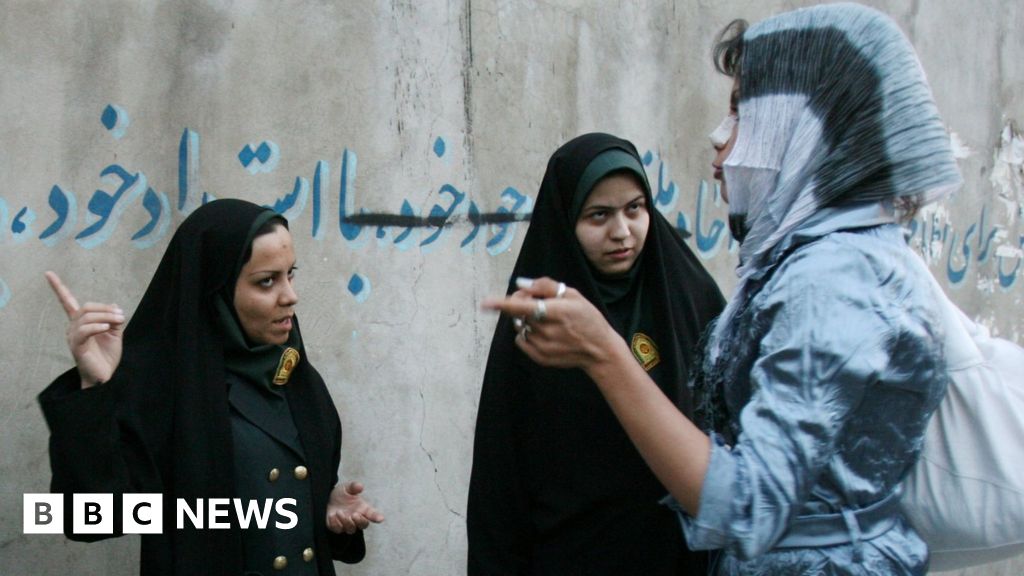
Iran protests: Mahsa Amini's death puts morality police under spotlight
The death of a woman detained by Iran's morality police has sparked angry protests, but who are they?
www.bbc.com
Iran protests: Mahsa Amini's death puts morality police under spotlight
- Published
1 day ago
- Published

Morality police patrols are tasked with ensuring that women are not wearing "bad hijab"
The death of 22-year-old Mahsa Amini after she was detained by Iran's so-called morality police has sparked angry protests, with women burning their headscarves in a defiant act of resistance against the Islamic Republic's strict dress code and those enforcing it.
The Gasht-e Ershad (Guidance Patrols) are special police units tasked with ensuring the respect of Islamic morals and detaining people who are perceived to be "improperly" dressed.
Under Iranian law, which is based on the country's interpretation of Sharia, women are obliged to cover their hair with a hijab (headscarf) and wear long, loose-fitting clothing to disguise their figures.
Ms Amini allegedly had some hair visible under her headscarf when she was arrested by morality police in Tehran on 13 September. She fell into a coma shortly after collapsing at a detention centre and died three days later in hospital. The force denied reports that officers beat her head with a baton and banged it against one of their vehicles.
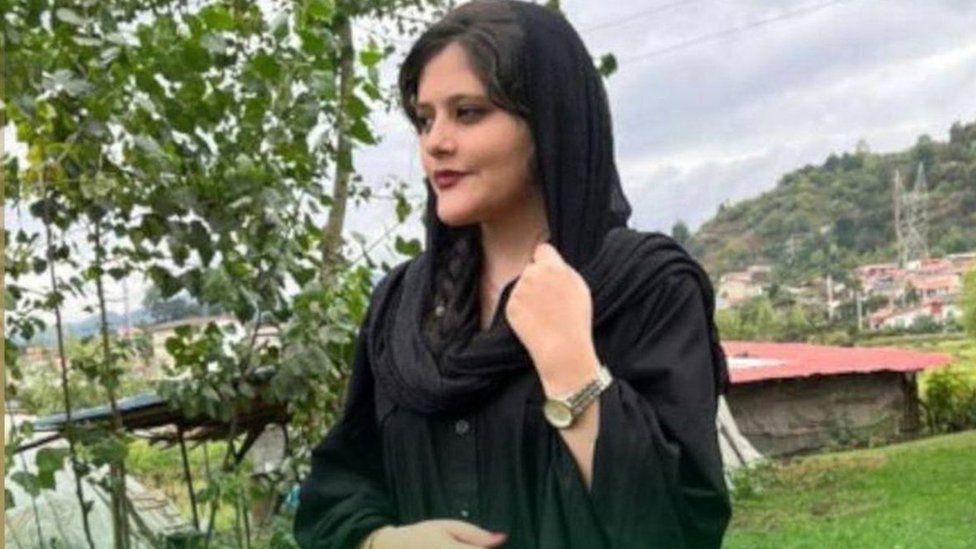
Mahsa Amini died on Friday, three days after she collapsed at a morality police detention centre
In a rare interview, one morality police officer spoke anonymously to the BBC about his experience working in the force.
"They told us the reason we are working for the morality police units is to protect women," he said. "Because if they do not dress properly, then men could get provoked and harm them."
He said they worked in teams of six, comprising four men and two women, and focused on areas with high foot traffic and where crowds gather.
"It's weird, because if we are just going to guide people why do we need to pick somewhere busy that potentially means we could arrest more people?"
"It's like we are going out for a hunt."
The officer added that his commander would tell him off or say he was not working properly if he did not identify enough people violating the dress code, and that he found it particularly difficult when people resisted arrest.
"They expect us to force them inside the van. Do you know how many times I was in tears while doing it?"
"I want to tell them I am not one of them. Most of us are ordinary soldiers going through our mandatory military service. I feel so bad."
Post-revolutionary decree
The Iranian authorities' fight against "bad hijab" - wearing a headscarf or other mandatory clothing incorrectly - began soon after the 1979 Islamic Revolution, a major aim of which was to make women dress modestly.While many women were doing so at the time, miniskirts and uncovered hair were not uncommon sights on the streets of Tehran before the pro-Western Shah Mohammad Reza Pahlavi was overthrown. His wife Farah, who often wore Western clothing, was held up as an example of a modern woman.
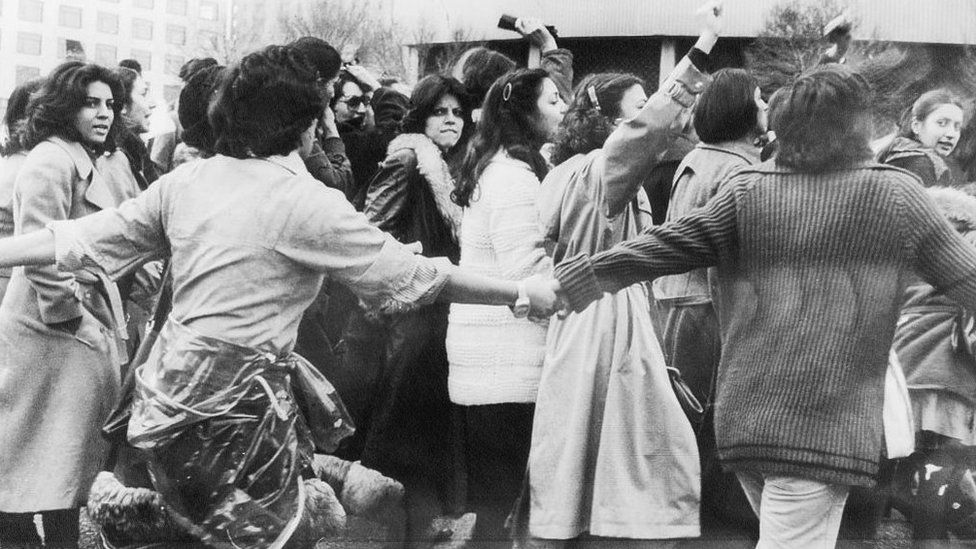
The anti-hijab protests that erupted in Iran in March 1979 carried on for several days
Within months of the founding of the Islamic Republic, the laws protecting women's rights that had been established under the Shah began to be repealed.
"It didn't happen overnight, it was a step-by-step process," said Mehrangiz Kar, 78, a human rights lawyer and activist who helped organise the first anti-hijab protest.
"Right after the revolution there were men and women on the streets offering out free headscarves to women wrapped in gift paper."
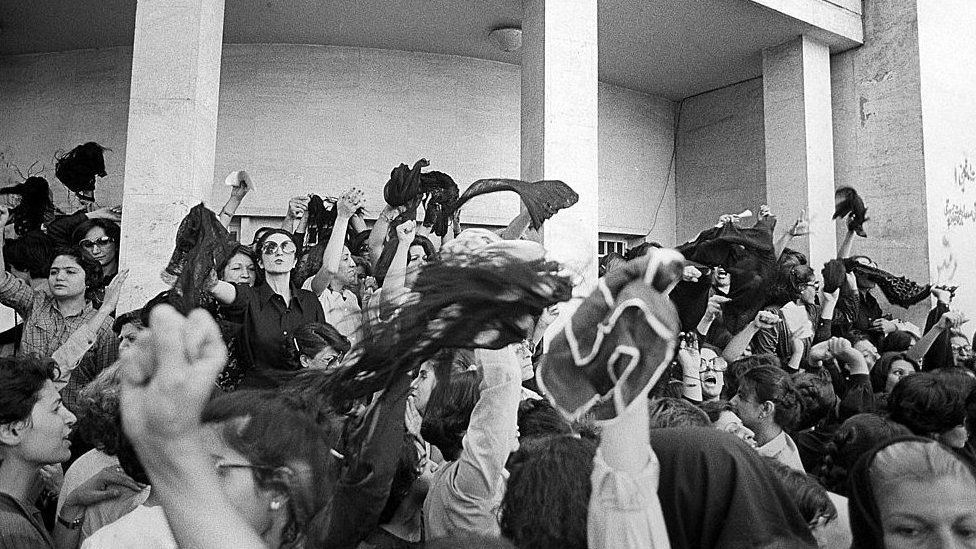
Women were waving headscarves in the air in resistance in the earlier anti-hijab protests of the 1980s
On 7 March 1979, the leader of the revolution, Ayatollah Ruhollah Khomeini, decreed that hijabs would be mandatory for all women in their workplaces and that he considered uncovered women to be "naked".
"That speech was received by many revolutionaries as an order to force the hijab on women's heads," said Mrs Kar, who is now based in Washington DC. "Many thought this was going to happen overnight, so women started resisting."
They responded immediately. More than 100,000 people, mostly women, gathered in the streets of Tehran the following day - International Women's Day - to protest.
'We got creative'
Despite Ayatollah's Khomeini's decree, it took some time for authorities to decide what was considered "proper" clothing for women."There were no clear instructions, so [they] came up with posters and banners showing models, which were hung on office walls. They said women should follow these instructions [about wearing a hijab] or they cannot enter," explained Mrs Kar.
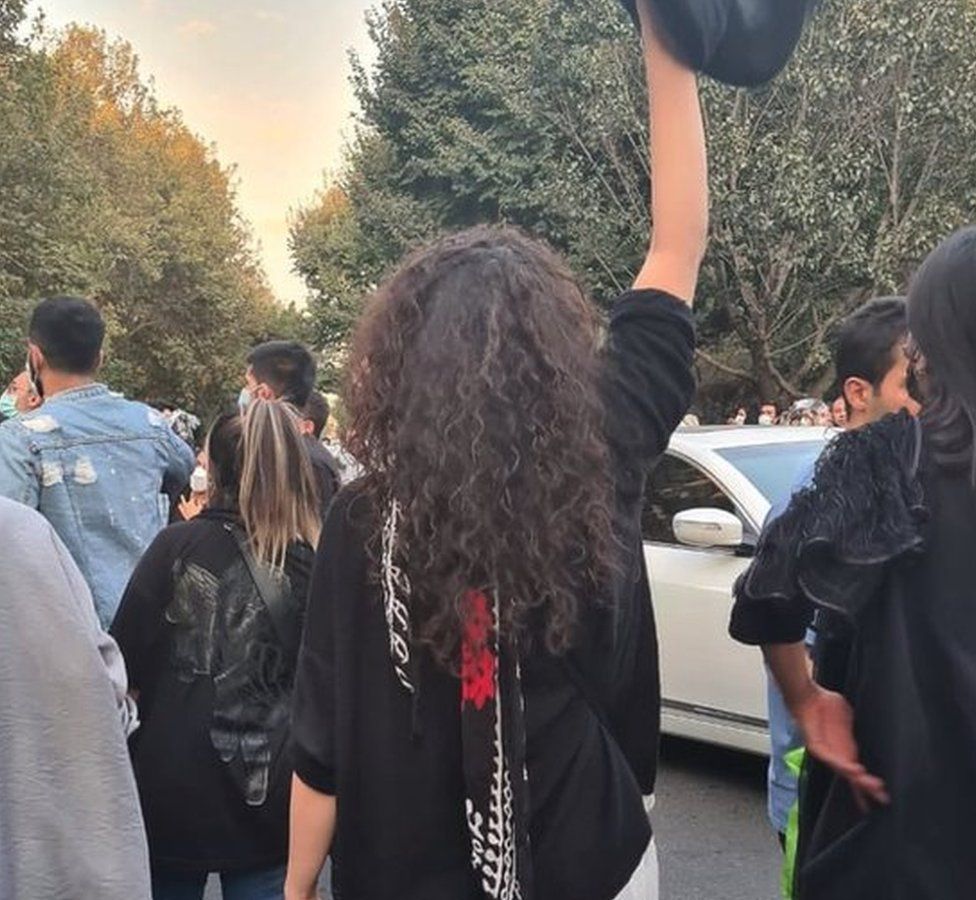
Pictures posted after Mahsa Amini's death showed women taking off their headscarves in a nod to the earlier protests

By 1981, women and girls were legally required to wear modest "Islamic" clothing. In practice this meant wearing a chador - a full-body cloak, often accompanied by a smaller headscarf underneath - or a headscarf and a manteau (overcoat) covering their arms.
"But the fight against the mandatory hijab continued on individual levels. We were creative in wearing the headscarf or not covering our hair properly," Mrs Kar said.
"Every single time they were stopping us, we were fighting."
In 1983, parliament decided that women who did not cover their hair in public could be punished with 74 lashes. More recently, it added the punishment of up to 60 days in prison.
Authorities have nevertheless struggled to enforce the laws since then, and women of all ages are frequently seen pushing the boundaries in public by wearing tight-fitting, thigh-length coats and brightly coloured headscarves pushed back to expose plenty of hair.
Heavy-handed approach
The extent to which these rules have been enforced and the severity of punishments handed down have varied over the years according to which president has been in power.The ultra-conservative then-mayor of Tehran, Mahmoud Ahmadinejad, sought to appear more progressive on the issue when he was campaigning for the presidency in 2004. "People have different tastes, and we have to serve them all," he said in a television interview.
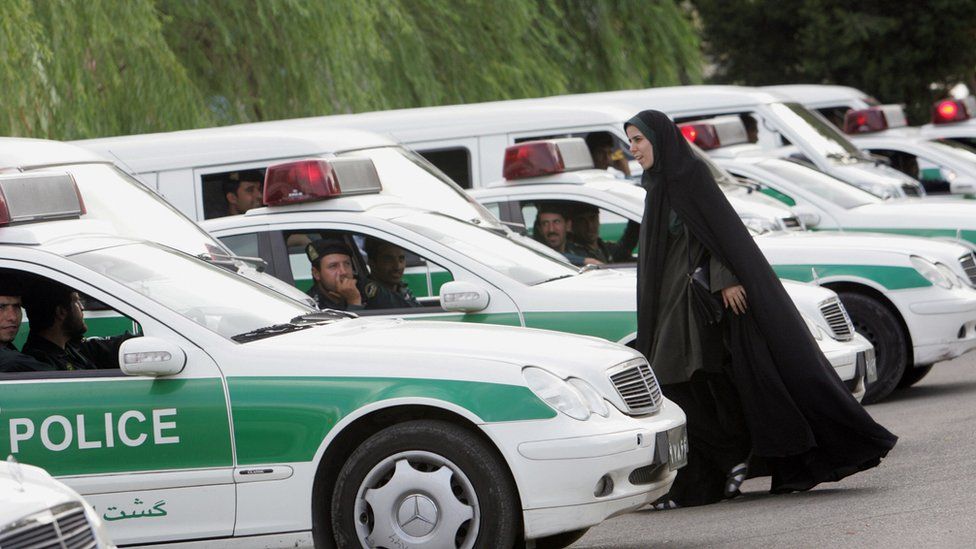
Gasht-e Ershad officers have been accused of verbally and physically harassing women
But soon after his election victory the following year, the Gasht-e Ershad were formally established. Until then, the dress codes had been policed informally by other law enforcement and paramilitary units.
The morality police are often criticised by the public for their heavy-handed approach, and women are frequently detained and only released when a relative appears to provide assurances they will adhere to the rules in the future.
"I was arrested with my daughter when we were stopped because of our lipstick," one woman from the central city of Isfahan told the BBC.
"They took us to the police station and asked my husband to come and sign a piece of paper that he would not let us out without a hijab."
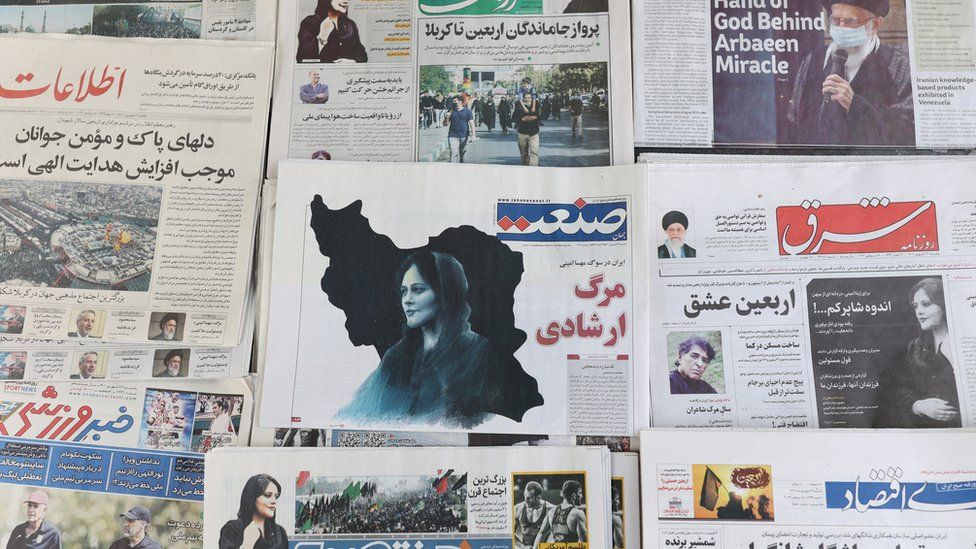
Questions about Mahsa Amini's death dominated the front pages of Iranian newspapers on Sunday
Another woman, from Tehran, told the BBC that a female officer said her boots could be "too erotic" for men and detained her.
"I called my husband and asked him to bring me a pair of shoes," she said.
"I then signed a paper admitting I was wearing inappropriate clothing and I now have a criminal record."
Other reports of experiences with the morality police, which have been shared with the BBC, include beatings and more cruel and unusual punishments.
One woman said the police threatened to put cockroaches on her body during one of her arrests.
New crackdown
President Ebrahim Raisi, a hard-line cleric who was elected last year, signed an order on 15 August to enforce a new list of restrictions.They included the introduction of surveillance cameras to monitor and fine unveiled women or refer them for "counselling", and a mandatory prison sentence for any Iranian who questioned or posted content against the hijab rules online.
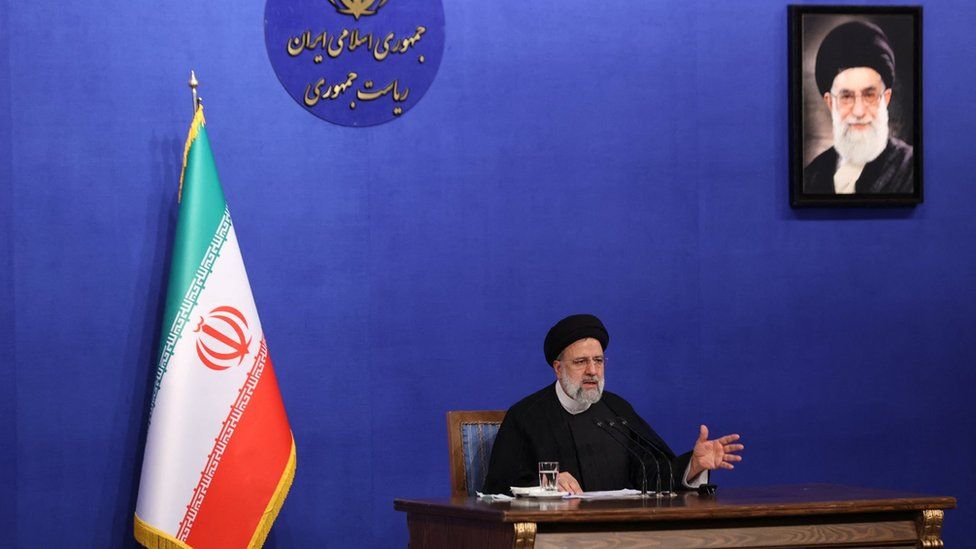
President Ebrahim Raisi issued a decree in August further curtailing women's freedom of dress
The restrictions led to an increase in arrests but also sparked a surge in women posting photos and videos of themselves without headscarves on social media - something that has only intensified in the days following Ms Amini's death.
Masih Alinejad, a journalist and activist now based in the US, says the protests which have erupted since the death of Ms Amini feel deeply personal.
Over the years, she has run several viral campaigns against the hijab laws, including #mystealthyprotest and many, including the government, see her as an instrumental force behind the current unrest.
Women began removing their headscarves and waving them in the air at Ms Amini's funeral in western city of Saqez on Saturday.
In the days that followed, they have taken to the streets across the country and some have been filmed setting fire to their hijabs to cheers from male protesters.
"When they did this it reminded me of the time people started taking the Berlin wall down, it's that moment," Ms Alinejad said.
"What makes me very emotional and hopeful is that this is the first time these girls are not alone. Now men are standing with women together."






